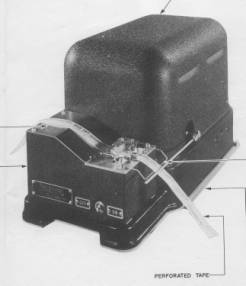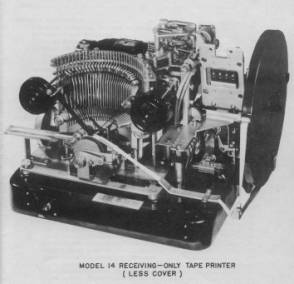
These photos are thumbnail prints. Click on pictures to see enlarged views.
This photo by S.F. Piggott dated March 20th 1914, shows a construction gang of linemen of the Great North West Telegraph Company installing a new pole line along the railway tracks somewhere in Toronto, Ont. The foreman of the gang was J. Charlebois.
A load of new cross arms are carried on the lorry.
The nearby building on the right side of the photo has the following painted on it- “The High Grade Oil Co Limited, Manufacturers of Lubricating Oils and Auto Cup Greases”.
One year after this photo was taken, the control of the G.N.W. Telegraph Company was acquired by the Canadian Northern Railway. When the Canadian Northern Railway was amalgamated as part of the Canadian National Railway System, the former G.N.W. Telegraph Company was integrated with the C.N.R.’s telegraph system, and was thereafter known as Canadian National Telegraphs.
It is interesting to note that later generations of the Charlebois family carried on the occupation of lineman with the C.N. Telegraphs. It is thought that two linemen who worked throughout Ontario in the 1960’s and later,- Ray Charlebois, and Regent Charlebois, were nephews of the J. Charlebois who was foreman of the gang shown in the 1914 photo.
G.N.W. Telegraph linemen using pike poles, raise a large telegraph pole in this 1914 view.
Above photos and story By: Gordon D. Smithson, (retired District Equipment Technician, Kingston,Ont) who also submitted the following article.
![]()
REMEMBERING THE AUTOMATICS TELETYPE ROOM
10th
FLOOR CN TELEGRAPHS 347 BAY STREET TORONTO - 1950’S
As
a newly trained Automatic Operator taught in 1953 by Doris McLellan at the
school run on Adelaide Street, Toronto, I stepped off the elevator onto the 10th
floor, 347 Bay Street, into the large telegraph relay room. It was a hectic
place with a noise pattern I had never encountered before.
There were hundreds of teletype
machines, people all over the place working on sending or receiving telegraph
messages, people hollering every once in a while “R X”. It seemed it took a
large number of staff to keep the system going. The pneumatic tube system was
constantly making its pumphhh sound as a cylinder arrived. Routing Aides were
constantly coming and going with messages.
The majority of the staff were
called Automatic Operators, specially trained to type telegrams onto a five
level perforated tape which converted the message into telegraphic impulses that
could be transmitted over telegraph wires to distant towns and cities across
Canada and the U.S.A.
Some of the older employees
homesteaded themselves to working the same circuit each day, and each time a
class of newly trained employees came on staff, they were assigned to work with
one of the experienced employees until they gained a sufficient working
knowledge and would then work on their own.
Bob Cresswell gave out assignments
to those of us who didn’t have a regular circuit, and we would give the
regulars their lunch and short reliefs. After a few months we could expect to
relieve any operator within the room, with the exception of the Overseas
International circuit – only a very few were allowed to work it due to its
unique operating routine.
When we had to question telegram
content that didn’t read correct, we had Supervisory Aides, namely- Bob
Boycott, Bill Lyons, Jim Gray, Len Hughes, Frank Faithful, Alex Ingram, Norm
Savill, and Wilf Newans,
who would give advice as to modifying or leaving text content as originally
received.
At one side of the room, Supervisor
D.S. McLean was accountable that all
did their jobs, and when someone pulled a booboo, he called you over to explain
why e.g. “Why did you change the wording in this telegram when you sent it?”
I had it happen once, I typed it wrong, and some flowers
didn’t arrive where they were supposed to. This was usually if someone
interrupted you when you were concentrating on typing what was in front of you.
About twice monthly, Frank Faithful would spot check your perforated tapes to
ensure you were following accepted operating practices in typing your perforated
tapes. Oh yes, we had to know how to read the perforated tapes, eventually it
was easier to read with more experience behind you.
We had a number pad, with a stack of
telegrams under it, ‘whammmh’ insert a new number, type the telegram on the
perforated tape, insert the tape into the transmitter distributor, and it was
whisked away to its final destination, or to another major Relay Office, similar
to the one here. Meanwhile, the narrow tape on the receive only Model 14
teletype was receiving incoming telegrams and spilling out waiting for someone
to glue it down onto a telegraph blank.
If the incoming telegram had the
words RUSH in the top line, when you completed gluing it to the telegraph blank,
you raised your voice to holler out – “R X’ and slip the blank up under a
metal clamp. A routing aide was supposed to respond and come immediately to
speed the telegram to its next
routing, so it didn’t get held up
with the normal message traffic.
Other names that come to mind are
Ward Kaufman, Early Night Supervisor, and Harry Murdock, Late Night Supervisor.
Some of the inter-city circuits were
routed over a multiplex system, and maintenance of the syncronization of these
mux-heads as they were called, was handled by Johnny Becker, Frank Babbington,
John Fawthrop, and Fred Cox. They also had to repair and/or replace any
of the perforator keyboards, teletypes, and associated equipment that required
attention.
In the rear corner of the operating
room, was the MORSE Department, with about twelve morse operators on duty
copying messages mostly from the station agents or telegraph operators of the
Canadian National Railway. These messages could be commercial telegrams, or
messages of railway business.
Submitted
by: Gordon D. Smithson, former Automatic Operator CNT TORONTO 1953-1958
VIEWS
OF TELETYPE EQUIPMENT MENTIONED IN THE ABOVE STORY


5
level Transmitter Distributor
Model 14 Receive Only Tape Printer

Model 15 Page Printers were used on the TieLines such as Canada Packers, and Schneiders Meats Kitchener, Lil Hider and Lucy Church were regulars on these circuits located in front of Bob Cresswell’s desk. Their messages were all in code, very hard to type, and very few Relief operators were allowed on these two circuits.
Above photos and story By: Gordon D. Smithson, (retired District Equipment Technician, Kingston,Ont)
![]()
AFTERNOON BOWLING LEAGUE C.N.T. TORONTO, ONT.
NOVEMBER 26th 1953
STANDING
1-ACES…………...30
2-SPARKIES……..27
3-HAWKS………..25
4-EAGLES………..23
5-HONEYS……….21
6-GOPHERS……...17
7-ROBBER……….14
8-DP’SSS…………11
ACES stuck in first place by taking a 5-2 split from DP’SSS while SPARKIES dropped into second place being defeated by EAGLES 5-2 and the HAWKS dropped to third place by losing all seven to the ROBBERS. With one week left in this first series the ACES seem to be sailing and unless they fall flat on their face should win the series.Verna Kaldun for the ACES turned it on hot and heavy with 721 flat to gross 811 which helped her team in no small way to stay in first place. Other good flat scores were Tom Wensley 656, E.Devonshire 617 and Dona Warminger 603.
Despite the efforts of Tom Wensley with 827 gross and Dona Warminger with 765 gross for the DP’SSS they were defeated by the A’s because of Verna Kaldun 811, Joyce Selly 670 and Eddie Daly 647.
SPARKIES were no match for the EAGLES who bowled very well in the following order, Stan Doyle 658, Rose Donofrio 629 Shirley Peacock 605 and Jackie Cavalier 603. Myrtle Goetz was best for SPARKIES with 656 followed by Susie Courtney 629 and Dev 617.
The ROBBERS featuring Marilyn Colville 680, Jim Gray 669, Bob Boycott 651 and Gord Smithson 635 defeated the HAWKS 7-0. The best for the HAWKS were Wilf Keene 661, Bill Worfolk 604 and Doreen Prescott 601.
The HONEYS pulled their best bowling of the season out of the hat to defeat GOPHERS 5-2 led by Vic Hill 729 and followed by Shirley Powell 695, Russell Gilchrist 663 and Jack Brown 632. Helen Ritchie 704 and Colin Balmer 618 were the heavy hitters for the GOPHERS.
BOWLING STARTS AT 1PM. PLEASE BE ON TIME.
Next Week.
The following names comprise the 400pm-midnight employees who worked as Automatic Operators, Supervisory Aides ,and Mux Mechanics working on the 10th floor, and Management employees on other floors of the Canadian National Telegraph building located at 347 Bay Street in downtown Toronto.
Although this bowling team list is half a century old, it may be of interest to you in associating a name with your visual memories of that name.
We had a unique working-social relationship in those years, Happy Times!
HONEYS ALLEYS 25-26 SPARKIES
Jack Brown E.Devonshire
Russell Gilchrist Peggy Quinn
June Lerch Leon Jacques
Joan Selly Susie Courtney
Shirley Powell Bob Guay
Victor Hill Myrtle Goetz
EAGLES ALLEYS 27-28 GOPHERS
John Becker Wilf Newans
Bill Mitchell George Filmore
Jackie Cavalier Lil Hider
Shirley Peacock Helen Ritchie
Rose Donofrio Colin Balmer
Stan Doyle Bobby Deschamps
HAWKS ALLEYS 29-30 ACES
Al Lennox Mike Richard
Bill Worfolk Eddie Daly
Doreen Prescott Verna Kaldun
Beryl Sweetman Claire Walsh
Beverly Morton Midge Lynch
Guy Desormeaux Joyce Selly
DP’SSS ALLEYS 31-32 ROBBERS
Gaetan Laferriere Jim Gray
Steve Maczko Bob Boycott
Sylvia Ring Marilyn Colville
Dona Warminger Marjorie Fillingham
Sofie Nicolof Ruth Quantz
Bonnie Bickerstaffe Roly Peacock
Above story By: Gordon D. Smithson, (retired District Equipment Technician, Kingston,Ont)
![]()
Peter Jones (on curbside) and Ray Whiting walking down Bay Street in Toronto about 1945 or 1946.
Midge Guest circa 1948-49
Len Ferguson submitted this card showing the CNT bicycle safety requirements.
Len ferguson submitted this CNT telegram notification tag.
Len Ferguson submitted this photo of the Automatic Department on Bay Street Circa 1950. Norm Saville is in the lower right hand of the picture. Does anyone know the identity of the other operators in the picture.
Stan Doyle submitted the above photo of the staff at KI CNT Office
This picture was taken in 1950. Peter Jones is the Clerk behind the counter and the gentleman that Peter is supposed to be serving is actually a Norm Saville who was roll playing and he actually was the relief Teleprinter Operator.
The above picture was submitted by Mike Ricks. It is the 1951 Annual CNT Management meeting at 151 Front Street In Toronto.
CNT Systems Training course in Toronto in 1953.
George Philips found this old photo in his archives and he is hoping someone might be able to identify some of the staff.. Marjorie Lecky has put some names to faces. The photo was taken sometime in the year 1954 of the Superintendent's Office staff (as they were called then) at 119 Adelaide Street in Toronto.
This picture was taken in 1969. Peter Jones is on left with Morley Kipp receiving 1969 CNT Toastmasters Award by Bob Symonds who is a CNCP Retiree now living in Newfoundland.
Brian Milne submitted this photo of the team entered in the 1986 YMCA Corporate Challenge.
Brian Milne submitted this photo of the team entered in the 1987 YMCA Corporate Challenge.
The picture above was taken at the CNCP Retirement Party held at the Leaside Memorial Gardens on April 15, 1988, and includes all the retirees in the Ontario District for the 1987 year (at least all those who were able to attend). It was the company intention, at that time to hold one of these parties each year for the retirees in that year. I'm not sure that it was ever repeated, as things started going badly for Unitel shortly thereafter, with downsizing etc., making a party of this nature impractical. (Submitted by Len Ferguson)
![]()
Graduation Picture of T&R Class 1980 Toronto (Submitted by Ron Hart)
![]()
Webmaster Bryant Freeman
Date this page was last Updated
04/09/08 03:08:45 PM